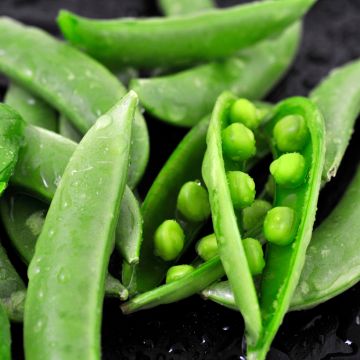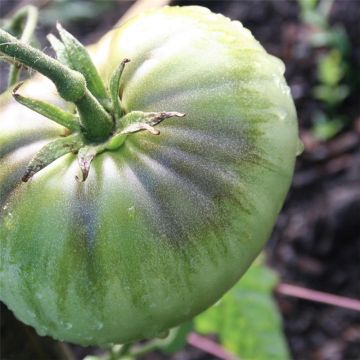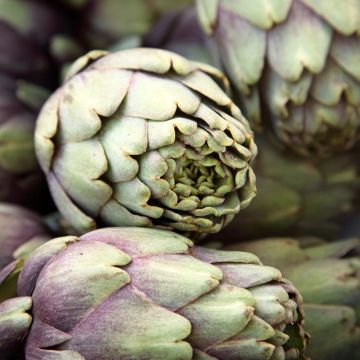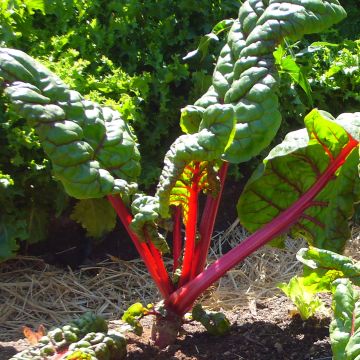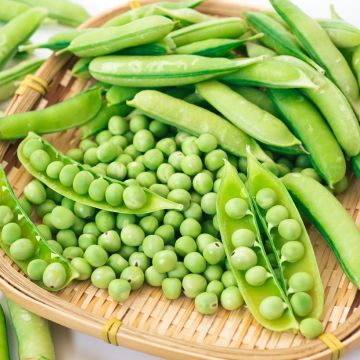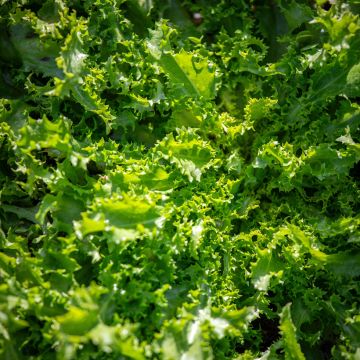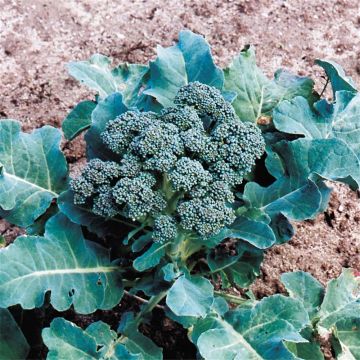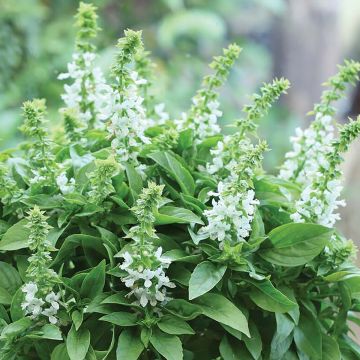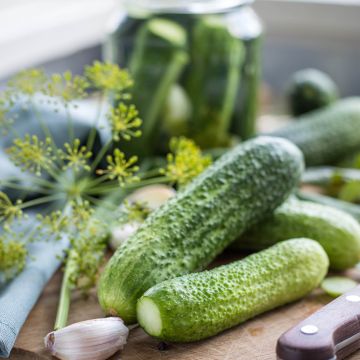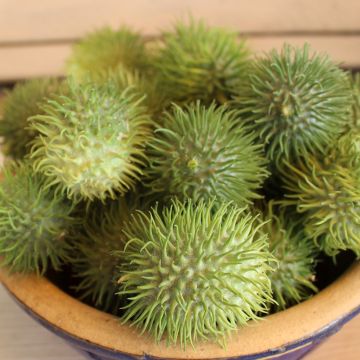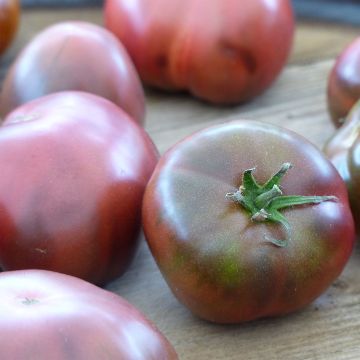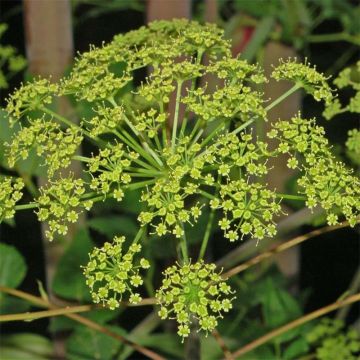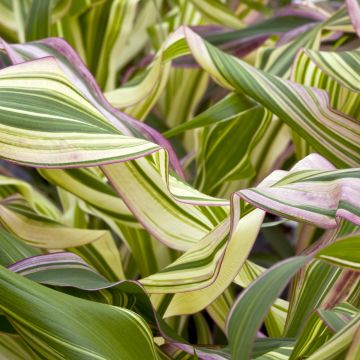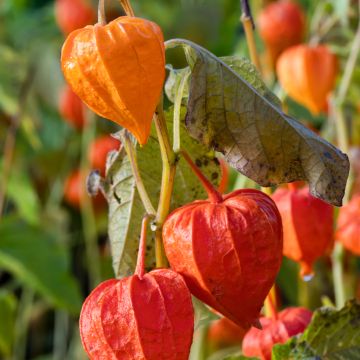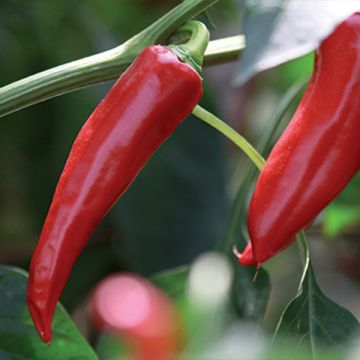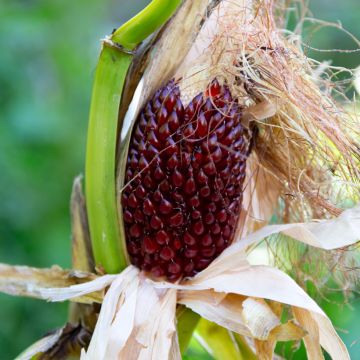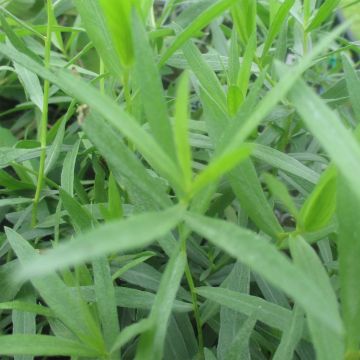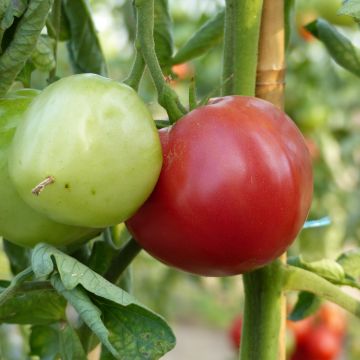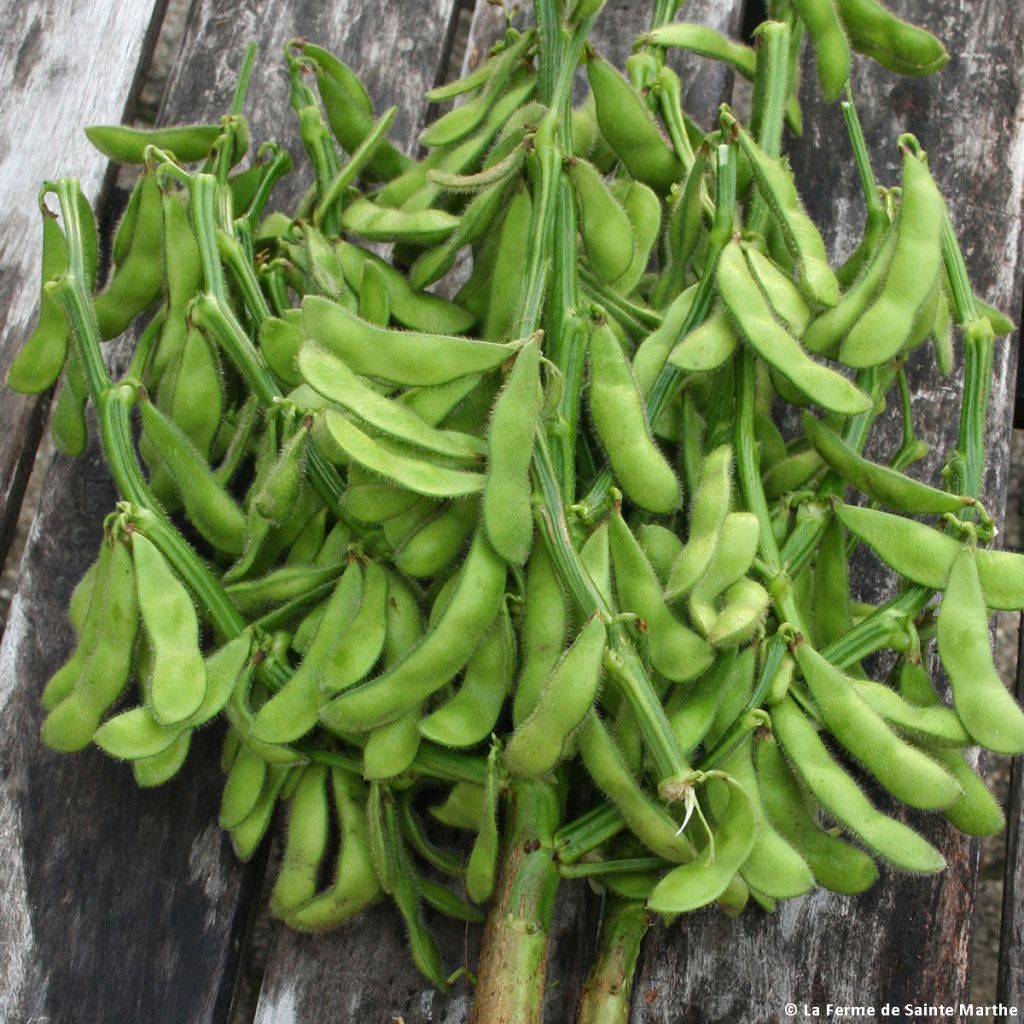

Soja Edamame Chiba Green en graines Bio - Ferme de Sainte Marthe
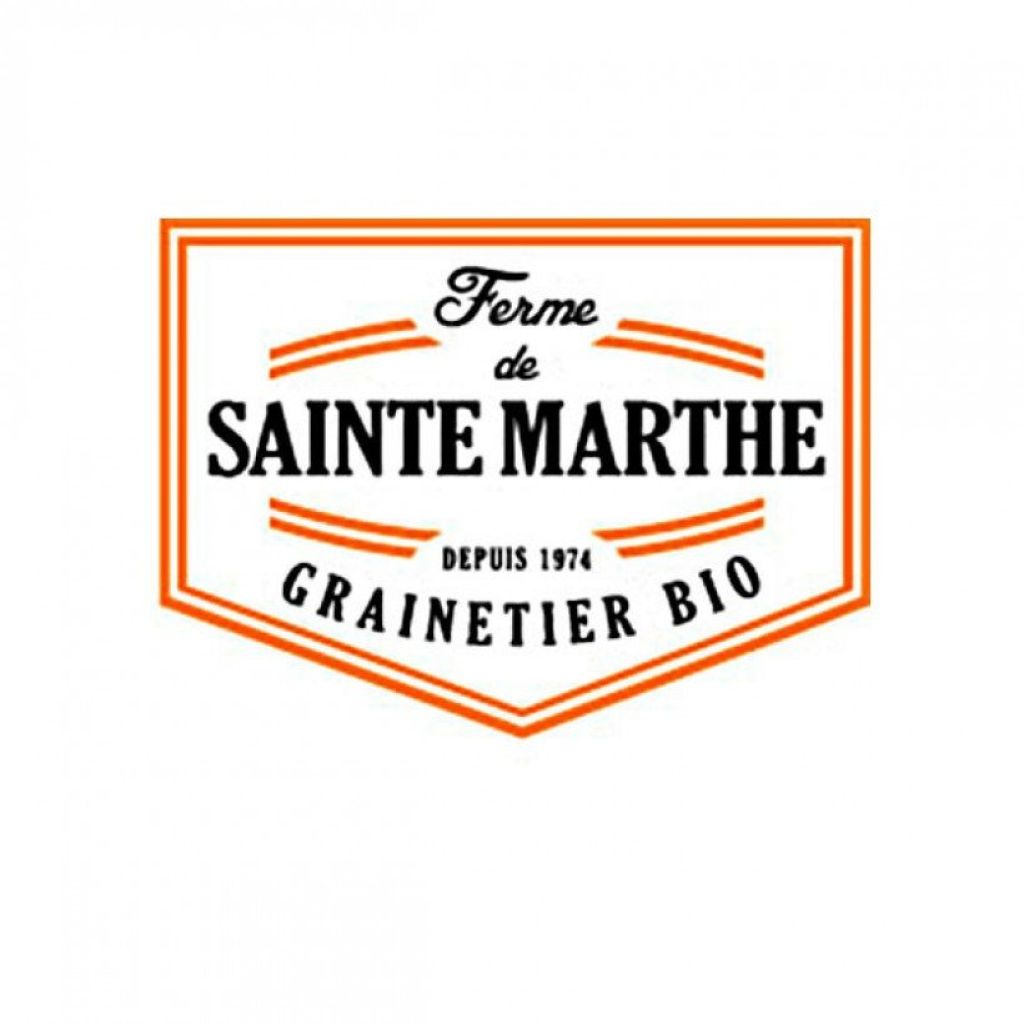

Soja Edamame Chiba Green en graines Bio - Ferme de Sainte Marthe
Glycine max 'Chiba Green'
Glycine max Chiba Green
Soybean, Soya bean
This item cannot be shipped to the selected country
Dispatch by letter from €3.90
More information
Schedule delivery date,
and select date in basket
This plant carries a 6 months recovery warranty
More information
We guarantee the quality of our plants for a full growing cycle, and will replace at our expense any plant that fails to recover under normal climatic and planting conditions.
Seed-only orders are dispatched by sealed envelope. The delivery charge for seed-only orders is €3.90.
Description
The 'Chiba Green' Edamame Soybean is an early variety, suitable for cultivation in Europe, including cooler regions. Highly productive, this annual plant has a bushy, upright and compact habit, and is rich in protein like beans, peas and broad beans. It is not demanding and thrives in sandy, fairly rich and well-drained soil. Due to the nutritional richness of its seeds and its ease of cultivation, soybeans deserve a larger place in our vegetable gardens. Sow from April to June for a harvest in August-September. Seeds from Organic Agriculture.
Glycine max, commonly known as yellow soybean, is an annual plant belonging to the Fabaceae family (legumes), like beans and many other vegetables in the vegetable garden. It is native to East Asia. For many varieties, the vegetation is climbing with erect stems reaching up to 1.50m (5ft) and leaves similar to bean leaves with 3 elliptical leaflets measuring 5 to 10cm (2 to 4in) long, villous underneath. After a very discreet flowering, hairy pods measuring 4 to 8cm (2 to 3in) resembling large beans develop, containing up to 3 to 4 yellow elliptical seeds measuring 5 to 10mm in diameter.
The 'Chiba Green' Edamame variety grows in the form of an upright clump, composed of several stems measuring approximately 60 to 80cm (24 to 32in) in height, bearing numerous pods containing 3 seeds on average. The seeds can be consumed fresh or dried. Due to their high protein content, they are a good food choice for a vegetarian diet.
Soybean cultivation is similar to bean cultivation: Sowing takes place from April to June when the soil is sufficiently warm and there is no longer a risk of frost. It requires a minimum of warmth and sunlight to develop. Harvesting takes place 75 to 90 days later in August-September, when the pods are still green and fresh for consumption in the following days, or a little later when they are dry for longer storage. Very low in calories and rich in protein, the pods and seeds also provide vitamins A, B1, B9, iron and fibre.
In the kitchen, 'Chiba Green' Edamame Soybeans are consumed like regular beans. The immature pods or young green seeds are enjoyed after a very quick boiling (5-10 minutes) or steaming. They can be served chilled with fleur de sel for an appetizer, with sushi, or hot in tomato sauce. Harvesting the dry seeds at the end of the season allows for the production of soy milk, tempeh, hummus and even tofu.
Organic or "AB" seeds come from plants cultivated without phytosanitary products (insecticides, herbicides). These seeds also do not undergo any post-harvest treatment. They bear the AB label and are certified by Ecocert, an independent organization.
Report an error about the product description
Harvest
Plant habit
Foliage
Botanical data
Glycine
max
Chiba Green
Fabaceae
Soybean, Soya bean
Cultivar or hybrid
Annual
Other Vegetable seeds from A to Z
Planting and care
The germination of 'Chiba Green' Soybean occurs at a temperature of around 18 to 20 °C. The emergence occurs between 10 and 20 days.
Soybeans are sown directly in place, in warm, humus-rich, and well-drained soil. Sandy soils are particularly suitable for them.
Sowing in open ground: sowing is done in late spring, between April and June, when there is no longer any risk of frost. It is done directly in the ground, placing one seed every 8 to 12cm (3 to 5in) approximately, at a depth of 3 to 4cm (1 to 2in), in furrows spaced about 60cm (24in) apart. Then cover with fine soil and, if necessary, water for the first time. Growth period: 75 to 90 days.
When the plants reach the stage of 2 true leaves, it is beneficial to hoe and hill each plant by about ten centimetres. If necessary, water regularly.
Seedlings
Care
Intended location
This item has not been reviewed yet - be the first to leave a review about it.
Vegetable seeds
Haven't found what you were looking for?
Hardiness is the lowest winter temperature a plant can endure without suffering serious damage or even dying. However, hardiness is affected by location (a sheltered area, such as a patio), protection (winter cover) and soil type (hardiness is improved by well-drained soil).

Photo Sharing Terms & Conditions
In order to encourage gardeners to interact and share their experiences, Promesse de fleurs offers various media enabling content to be uploaded onto its Site - in particular via the ‘Photo sharing’ module.
The User agrees to refrain from:
- Posting any content that is illegal, prejudicial, insulting, racist, inciteful to hatred, revisionist, contrary to public decency, that infringes on privacy or on the privacy rights of third parties, in particular the publicity rights of persons and goods, intellectual property rights, or the right to privacy.
- Submitting content on behalf of a third party;
- Impersonate the identity of a third party and/or publish any personal information about a third party;
In general, the User undertakes to refrain from any unethical behaviour.
All Content (in particular text, comments, files, images, photos, videos, creative works, etc.), which may be subject to property or intellectual property rights, image or other private rights, shall remain the property of the User, subject to the limited rights granted by the terms of the licence granted by Promesse de fleurs as stated below. Users are at liberty to publish or not to publish such Content on the Site, notably via the ‘Photo Sharing’ facility, and accept that this Content shall be made public and freely accessible, notably on the Internet.
Users further acknowledge, undertake to have ,and guarantee that they hold all necessary rights and permissions to publish such material on the Site, in particular with regard to the legislation in force pertaining to any privacy, property, intellectual property, image, or contractual rights, or rights of any other nature. By publishing such Content on the Site, Users acknowledge accepting full liability as publishers of the Content within the meaning of the law, and grant Promesse de fleurs, free of charge, an inclusive, worldwide licence for the said Content for the entire duration of its publication, including all reproduction, representation, up/downloading, displaying, performing, transmission, and storage rights.
Users also grant permission for their name to be linked to the Content and accept that this link may not always be made available.
By engaging in posting material, Users consent to their Content becoming automatically accessible on the Internet, in particular on other sites and/or blogs and/or web pages of the Promesse de fleurs site, including in particular social pages and the Promesse de fleurs catalogue.
Users may secure the removal of entrusted content free of charge by issuing a simple request via our contact form.
The flowering period indicated on our website applies to countries and regions located in USDA zone 8 (France, the United Kingdom, Ireland, the Netherlands, etc.)
It will vary according to where you live:
- In zones 9 to 10 (Italy, Spain, Greece, etc.), flowering will occur about 2 to 4 weeks earlier.
- In zones 6 to 7 (Germany, Poland, Slovenia, and lower mountainous regions), flowering will be delayed by 2 to 3 weeks.
- In zone 5 (Central Europe, Scandinavia), blooming will be delayed by 3 to 5 weeks.
In temperate climates, pruning of spring-flowering shrubs (forsythia, spireas, etc.) should be done just after flowering.
Pruning of summer-flowering shrubs (Indian Lilac, Perovskia, etc.) can be done in winter or spring.
In cold regions as well as with frost-sensitive plants, avoid pruning too early when severe frosts may still occur.
The planting period indicated on our website applies to countries and regions located in USDA zone 8 (France, United Kingdom, Ireland, Netherlands).
It will vary according to where you live:
- In Mediterranean zones (Marseille, Madrid, Milan, etc.), autumn and winter are the best planting periods.
- In continental zones (Strasbourg, Munich, Vienna, etc.), delay planting by 2 to 3 weeks in spring and bring it forward by 2 to 4 weeks in autumn.
- In mountainous regions (the Alps, Pyrenees, Carpathians, etc.), it is best to plant in late spring (May-June) or late summer (August-September).
The harvesting period indicated on our website applies to countries and regions in USDA zone 8 (France, England, Ireland, the Netherlands).
In colder areas (Scandinavia, Poland, Austria...) fruit and vegetable harvests are likely to be delayed by 3-4 weeks.
In warmer areas (Italy, Spain, Greece, etc.), harvesting will probably take place earlier, depending on weather conditions.
The sowing periods indicated on our website apply to countries and regions within USDA Zone 8 (France, UK, Ireland, Netherlands).
In colder areas (Scandinavia, Poland, Austria...), delay any outdoor sowing by 3-4 weeks, or sow under glass.
In warmer climes (Italy, Spain, Greece, etc.), bring outdoor sowing forward by a few weeks.

































